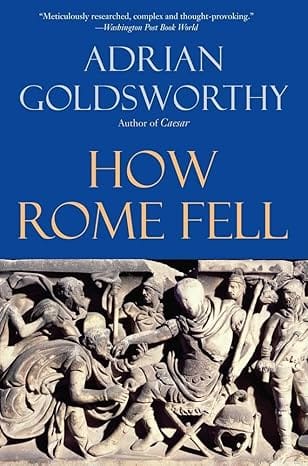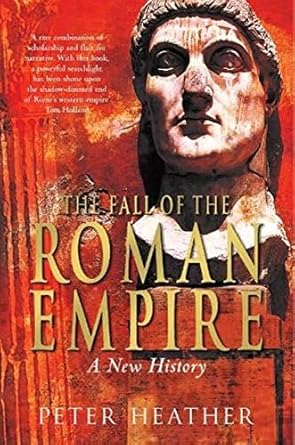The Long View: For Want of a Nail
Another counterfactual history, but this time one meant as entertainment. I haven't read this book, but I may get around to it at some point.
“I care only if it is effective on the page. I agree with the late Ernest Newman: a great score is more finely realized when one reads it in the tranquility of one's study than when one sits in a crowd and endures the ineptitudes of orchestra and singers.
“You mean you can do it better in your head than a hundred accomplished artists can do it for you?”
The Lyre of Orpheus
For Want of a NailFor Want of a Nail
For Want of a Nail
The author starts the divergence, reasonably enough, with the loss by the insurgents of the Battle of Saratoga in 1777. In this history, the British commander John Burgoyne is reinforced at the last minute by the garrison in New York City. The strategic effect of the battle (actually several engagements in both the real and alternative scenarios) gives the British control of the Hudson River, thereby cutting off New England from the middle and southern colonies. More important, it causes the French to lose interest in supporting the insurgency. After suffering further defeats, Washington is relieved of his command, but the Continental Army continues to disintegrate. Congress, driven from Philadelphia, soon sues for peace.
In the aftermath, the most prominent would-be Founding Fathers are hanged (weasely old Benjamin Franklin escapes by virtue of having helped to negotiate the surrender). However, the British are generous with amnesty. The younger rebel leaders, people like Madison and Mason and Hamilton, survive the defeat, and set out to found their own nation in Spanish territory. The Wilderness Walk of 1781, to found the state of Jefferson in the region that might otherwise have been Texas, becomes the creation myth of a new society.
No one had really expected the American rebellion to succeed. The British saw the incident as largely their fault: they had neglected to establish a constitutionally coherent system of self-government within the empire for their North American colonies. The result is the Britannic Design, which divides British North America into several confederations. At first, these are only loosely linked under a viceroy. (The first of these is John Burgoyne himself, by then called Lord Albany.) Partly in order to facilitate internal improvements, and partly because of the growing military threat from the southwest, these confederations are more closely linked in the 1840s, becoming the Confederation of North America (CNA). The CNA has a parliamentary form of government (so do its constituent confederations); the head of state, called the Governor-General, is majority leader of parliament. Though London continues to appoint viceroys, the CNA's relationship to the British Empire becomes merely symbolic by the second half of the 19th century.
At no stage does British North America extend to the Pacific: Alaska, at first a Russian territory, divides the wealthy Confederation of Manitoba from the ocean. (Manitoba is also notably flaky; imagine California compounded by British Columbia.) Thanks to a war with France at the end of the 18th century, the CNA also includes the territory between the Mississippi and Missouri Rivers. However, after a series of counterfactual wrangles as tedious as the real ones, Quebec eventually becomes simply an “Associated Territory” of the CNA. Nova Scotia always is, for reasons that are never explained.
Federal Governance
Sobel is sparing of the use of real people in his counterfactual history. The only one who plays a major role is Andrew Jackson, the principal leader of Jefferson, who founds the United States of Mexico (USM). He becomes its first president in 1821. The USM has a federal constitution very similar to that of the erstwhile USA. However, it has an even more complicated ethnic composition: Anglos and “Hispanos” (Iberian Mexicans, presumably) constitute the ruling stratum, but there are also Mexicanos (ordinary Mexicans); Indians (who in this case have two states more or less to themselves), and the slave population. The country survives because Jackson makes the people of Jefferson identify themselves as Mexican, but conflict among these groups is one of the engines of USM history.
As originally constituted, the USM includes Mexico, the Rocky Mountain region and the Pacific Coast up to the northern border of California. In a war with Russia in the late 19th century, it acquires Alaska. In fact, at that point the country is in the hands of a colorful megalomaniac, who also conquers part of Siberia and the whole of what we know as Columbia. Readers interested in a recitation of the whole timeline should get the book.
For Want of a Nail
The USM, in contrast, got the “Jacksonian tradition” along with Jackson himself. This is the strand of American political culture that is very keen on liberty and indifferent to equality. It is also the strain that brought the real world “Manifest Destiny” (in the USM, it's called “Continental Destiny”). The USM is not quite a pure villain in this history. Its lapses from republicanism are not produced by Jacksonianism, in fact, but by a convergence with ordinary Latin American caudilloism. Nonetheless, the USM does not get around to abolishing slavery completely until about 1920 (it's done by a no-nonsense ex-general) and the country does cause more than its share of trouble in the world.
Sobel has succeeded in suggesting a plausible modern world that never experienced the great ideological divides of the 19th and 20th centuries. Partly because the American Revolution fails, the French Revolution never amounts to more than a minor Parisian uprising. The French monarchy survives until 1880. No French Revolution; no Napoleon; one wonders whether there was a Hegel. A Marx is indeed mentioned briefly, and there is even a tradition of radical socialism. However, this aspect of politics is muted. There is no equivalent to the Soviet Union in this history, and no fascism, either. The Global War breaks out in rather the way that the First World War in the real world did, through ordinary Great Power ambition acting on an alliance system that is too big and too rigid.
As an economic historian, the author treats us to several depressions, two in the 19th century and one in the 20th. His heart, one suspects, is in another of his creations: Kramer Associates. This is a multinational corporation that starts in the USM; the basis of its early power is the oil industry, though it soon branches out into every kind of manufacturing. It dominates the USM's economy and foreign policy in some periods. It is largely to secure the company's gold discoveries in Alaska, for instance, that the USM conquers Alaska. On the other hand, Kramer Associates distances itself financially and geographically from the USM as that country's political system becomes less predictable. The company shifts its headquarters to Taiwan. In order to prevent a renewed outbreak of the Global War, the company invents and detonates its own nuclear weapon, thus initiating a regime of strategic deterrence. Now there's a poison pill for you.
There are some technological divergences from the real world. Television (“vitavision”) makes its appearance 30 or 40 years early, while automobiles with steam engines (“locomobiles”) are still the dominant form of private transport until the 1930s. Perhaps to save the trouble of making up the names of counterfactual inventors, Thomas Alva Edison is credited with inventing essentially everything.
One cannot praise too highly the verisimilitude of this counterfactual history. It reads just like a college history text, and not a boring one. As for the scenario, there is little point in arguing against the details of a counterfactual history. (At least, this is true for counterfactual history intended as entertainment: higher standards obtain when a historian is trying to determine what real alternatives faced the decision makers in a particular incident.) So, I will confine myself to suggesting that a precocious experiment with dominion status for North America would not have succeeded. Britain actually did try something like that with Ireland after the American Revolution. The island proved so disloyal that the experiment was terminated; the ancient Dublin Parliament was abolished in the last Act of Union. One might argue that this would not have been a problem with the North American confederations, because there would have been no French Revolution to incite unrest. Maybe, but it is likely that the Americans would have remained perfectly capable of inciting each other.
For Want of a Nail
We have over a century of earnest attempts to predict the future, enough that we can measure these would-be histories against what actually happens. The limits to prediction are the same as the limits to counterfactuals. When we read the real history, we are left telling ourselves: “You just can't make this stuff up.”
Copyright © 2003 by John J. Reilly

For Want of a Nail: If Burgoyne had won at Saratoga (Greenhill Military Paperback) By Robert Sobel



Comments ()